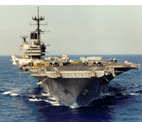CV60
Posts: 992
Joined: 10/1/2012
Status: offline

|
Q3 1969
Expenditures/Budget(Current Funds/Expenditures/Quarterly Balance)
$ $404,468.9 $14,161.2 $29,588.8
Actions
Launch unmanned LK-700 circumlunar flight
Launch Venera 7
Events
At the end of Q2, the UR-700 booster is at 98% reliability, the LK-700 is at 98%, the Krechet-94 spacesuit is at 96%. Venera 7 is at 87%. Venera 9 is at 81% reliability and Mars 2 is at 83%. The overall UR/LK-700 system reliability is 95%
The unmanned circumlunar flight is successful. However, the Venera 7 probe failed to deploy properly, so the mission was a failure.
Analysis
The Venera 7 mission was a high risk mission. Because there has not been any orbital Venus missions, it will take a -30% penalty. Moreover, it is being manned by “second string” mission controllers. However, the lunar flight schedule will not permit a gap, if it is to beat NASA to a landing.
The unmanned lunar flight involved a different sort of risk analysis. By flying it, a -5% reliability penalty is avoided for the first manned lunar flight. However, at this point, my mission controllers, and flight crews are well trained, and the UR/LK-700 system is very reliable (98% reliability overall). A good argument could be made that the penalty is a no worse that the delay that would result if there was a failure on this test mission. In other words, the risk to the program might be as great from flying this mission, despite it being done for risk reduction purposes. Historically, George Mueller made a similar argument when he argued for “all up” testing of the Saturn V rocket. Despite the logic of this position, I will use von Braun’s more incremental testing approach, as the Soviet program is not under the same financial pressures as Apollo was when Mueller made his argument.

 Attachment (1) Attachment (1)
|
 Printable Version
Printable Version













 New Messages
New Messages No New Messages
No New Messages Hot Topic w/ New Messages
Hot Topic w/ New Messages Hot Topic w/o New Messages
Hot Topic w/o New Messages Locked w/ New Messages
Locked w/ New Messages Locked w/o New Messages
Locked w/o New Messages Post New Thread
Post New Thread